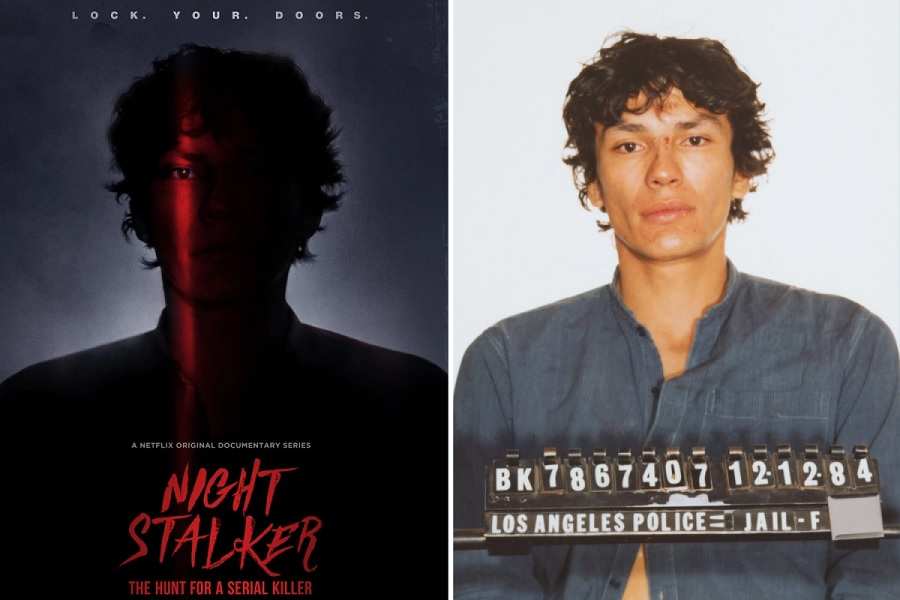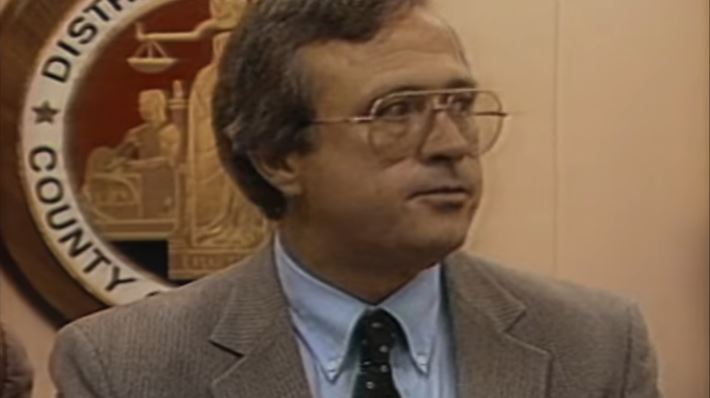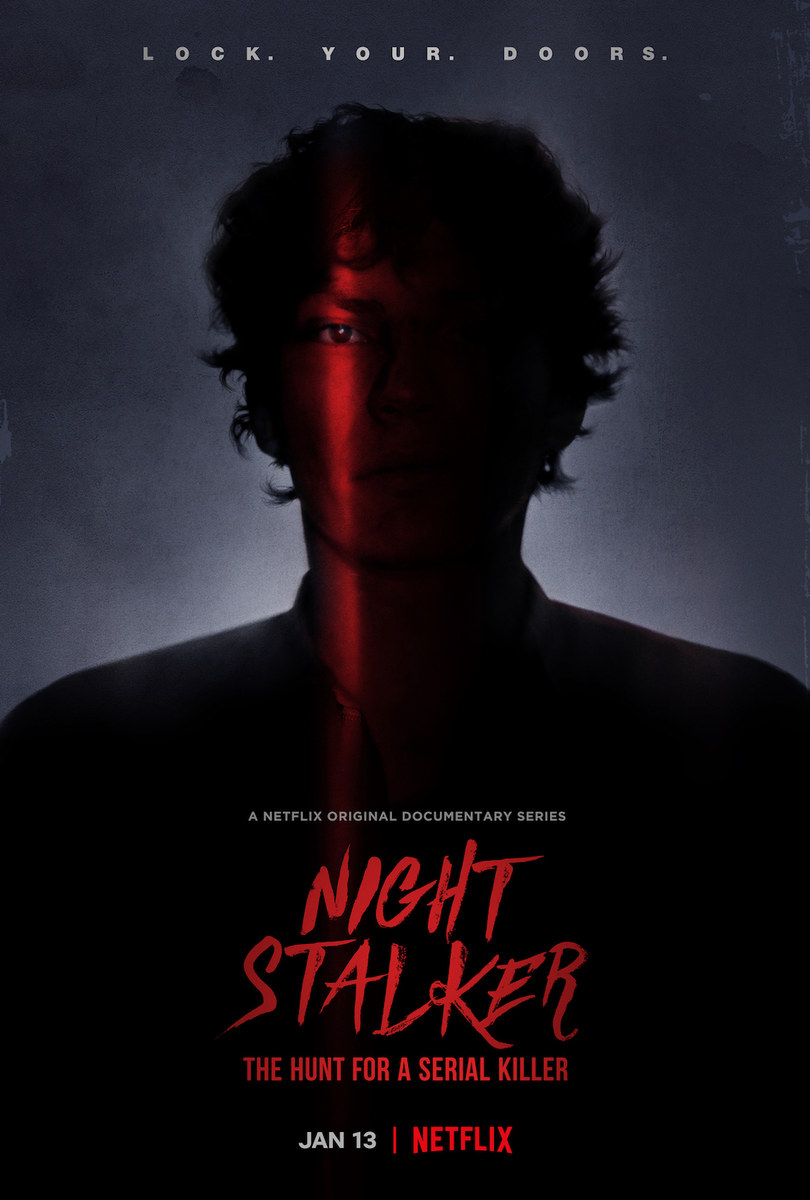Night Stalker: Shocking Revelations About Richard Ramirez in Netflix’s Crime Documentary
Night Stalker: The Hunt for a Serial Killer— For decades, the world has dealt with serial killers, and one of the earliest to have been reported but never caught is Jack the Ripper, who in 1888 is alleged to have been primarily involved in the Whitechapel area of London. He gradually became part of rumors and legends.

The San Francisco piece of the story was a fascinating piece of the puzzle, because in a way, this is the puzzle piece that leads to the identification of Ramirez and essentially to his arrest.
Los Angeles was also terrorized by a convicted rapist and killer in the summer of 1985, who burst into homes through unlocked windows and doors at night, and 13 men, women and children had fallen victim to him before the police could apprehend him. Often he used a hammer, sometimes a knife, often a telephone strangulation cable, and sometimes, once he had done his bloody business, he got a meal from the fridge.
Tiller Russell’s latest Netflix docuseries, “Night Stalker: the Hunt for a Serial Killer” graphically points out the horrific actions of the criminal whose real name was Richard Ramirez (this role is played by Lou Diamond Phillips) and how he got Los Angeles people into a state of terror and hysteria.
These are the words of Tiller Russell, the producer of the upcoming four-part Netflix doc series “Night Stalker: The Hunt for a Serial Killer,” who talked about the project. The documentary tells the story of Richard Ramirez, the infamous Satan-worshipping rapist, and the gruesome reign of terror he brought upon the residents of Los Angeles in the sweltering summer of 1985, causing 13 victims to die.

This is not Ramirez’s first doc, but what makes “Night Stalker” stand out is the ways in which Russell strips his peculiar rock star image of the convicted killer, sharpening the show’s emphasis on the first-hand experiences of the concerned police officers, members of the public, suspects and survivors.
Also Read: Dickinson Season 2 Review: Hailee Steinfeld Returns in Apple TV’s Arch Multi-Hyphenate Series
A travel to San Francisco by Ramirez played a crucial role in his arrest. It appeared to jeopardize the investigation at first, but ultimately exposed itself as the impetus for taking down the Night Stalker for good.

Episode 3 of the show sheds new light on the murder of a 66-year-old Lake Merced man named Peter Pan on the 18th of August, who died in bed from a bullet wound to his head after Ramirez stormed his house.
The scene of the crime was pretty disgusting,”The crime scene was pretty grotesque, “
For Los Angeles homicide detectives Gil Carrillo and Frank Salerno, who narrate every episode of the season, the arrival of The Night Stalker in the Bay Area changed everything. When the case of Night Stalker went nationwide, more police were placed on a task force patrolling the streets, more people continued to live in terror, almost contributing to the devastation of the whole case of Carrillo and Salerno.
Also Read: Conceptual Masterpiece Movies & TV Shows You Must Watch — Times Read
Falzon continues on-screen, “The Chief [of Police] explained to the Mayor of San Francisco, Dianne Feinstein, that we had a link to The Night Stalker,” What started as a bid to warn the general public of this glaring security dilemma became a PR nightmare.

Feinstein went on national television and shared confidential information related to the work undertaken by Carrillo and Salerno, including the mugshot of Ramirez, the unique Avia shoe print linking him to certain murders and the sort of weapon used in several of the killings. The detectives weren’t impressed.
“What’s interesting is everybody’s trying to do their best,” concluded Russell. Nobody is going to step on someone else, whether it’s the media trying to get the news out, or whether it’s the mayor, at the time, trying to defend her community and educate the public, or it’s San Francisco PD, or LA, or any of these other municipalities. But at the time, there was this atomization of information. Back then, data was not exchanged. And so you just have people walking on every oth.
This may have destroyed the case, but some fast thinking by the Department of the Los Angeles Sheriff led to the public being released with more details. And it wasn’t the cops in the end, but a group of public people who ended up taking down Ramirez.
Capturing Richard Ramirez is an iconic Los Angeles story. Multiple residents on mass transport identified him, prompting the madman to sprint down the streets searching for an exit before being taken down by community members. In the final episode, the riveting facts that lead up to that terrifying moment are recorded.

Here, two separate storylines collide. Salerno addresses a call from a woman who believed that her father was acquainted with the perpetrator, who lived on the street around LA’s Skid Row. His name was Rick and he was from El Paso, Texas, according to the man. And Falzon, who worked in San Francisco on some of the leads, remembers his brutal run-in with a single source who had ties to the perpetrator. About his name? Rick. Rick. From Texas’ El Paso.
In an episode chock full of them, it’s an exhilarating moment. In comparison, when you remember the attack that occurs in the back seat of Falzon’s vehicle, it is a celebration of the grit that goes into this sort of detective work, which toggles the path of legality. Yet, after it was said and done, Falzon and his girlfriend learned the full identity of the Night Stalker. That details, together with the popular police sketch by Richard Ramirez, set in motion a chain of events that ended in the erratic run of the killer through the streets of the Southland.
“In law enforcement circles, there are a lot of people who say, “If it wasn’t for Frank Falzon and his wife in San Francisco, who served in this case, this case would never have been settled in a million years,” Russell revealed.

It is unusual to see a true crime series that brings additional information to the narrative of one of the most iconic serial murderers in American history. Instead of the perpetrator, turning the attention on the cops and victims is a strong decision that honors the unseen heroes that helped bring Ramirez to justice. In the end, their story is “Night Stalker: The Hunt for a Serial Killer.” And, as Tiller explained it, the ex-heroes who helped bring Ramirez to justice.
It was a riveting, harrowing and surprisingly moving experience for me to produce this series in respects that I would never have foreseen or imagined,” he explained. “And my expectation is that some of that experience is communicated and translated to the viewer and that it is gripping, unsettling, moving, harrowing and often thought-provoking in equal parts. For me, that’s what it was.
Premise:
The series has very unsettling visuals that can bring even the toughest shivers down the spine, and the serial attacks by Ramirez were not new to the area, which had previously seen this kind of crime-the murders of Black Dahlia and Manson, who murdered a pregnant Sharon Tate, Roman Polanski’s American actress and wife.

With no proven trend, Ramirez was a murderer. Around June 1984 and his arrest in August 1985, between the ages of six and 82, 13 people died. They were of varying sex, races and classes. Open windows and doors were the only standard feature, and LA residents zipped up their 100F homes, barricaded their windows, and adopted big dogs. But for a long time, the “bogeyman” proved elusive, and when he was eventually trapped by passersby on the highway, who had seen pictures of him in the papers, he was just 25. He was sentenced to execution and lived on death row for two decades until he died of cancer.
Russell, who is a veteran of the real crime series, has been involved in this since his days as a local newspaper reporter. In the memories of two LA investigators, Gil Carrillo and Frank Salerno, he leads us into the ‘Night Stalker.’ 30 years after the terrifying nights, Carrillo’s recollection was incredible, and he recalled the specifics with accuracy. The two of them, barely resting or feeding, went through Hell. Yet, in the end, their sweat was worth it.
